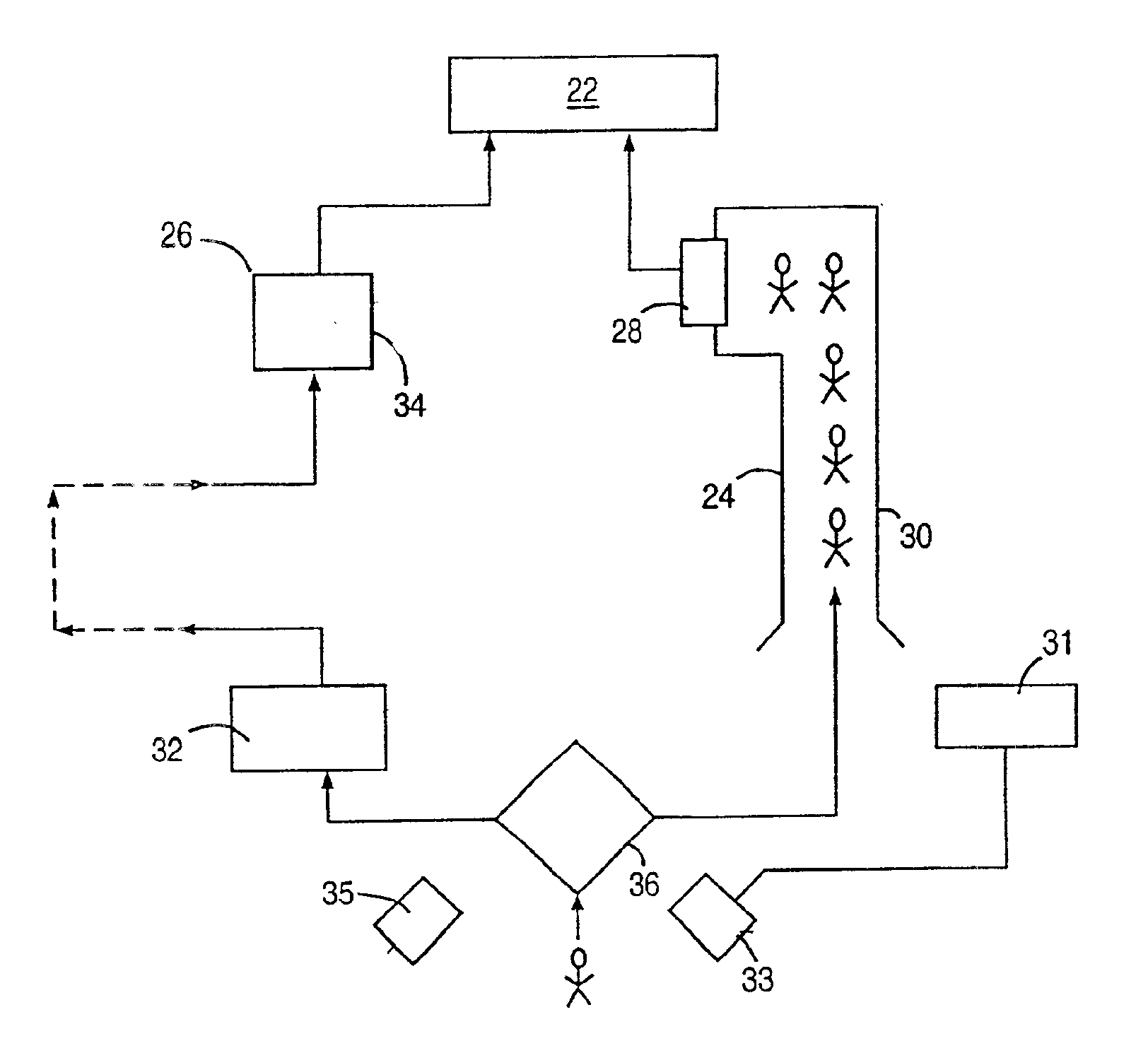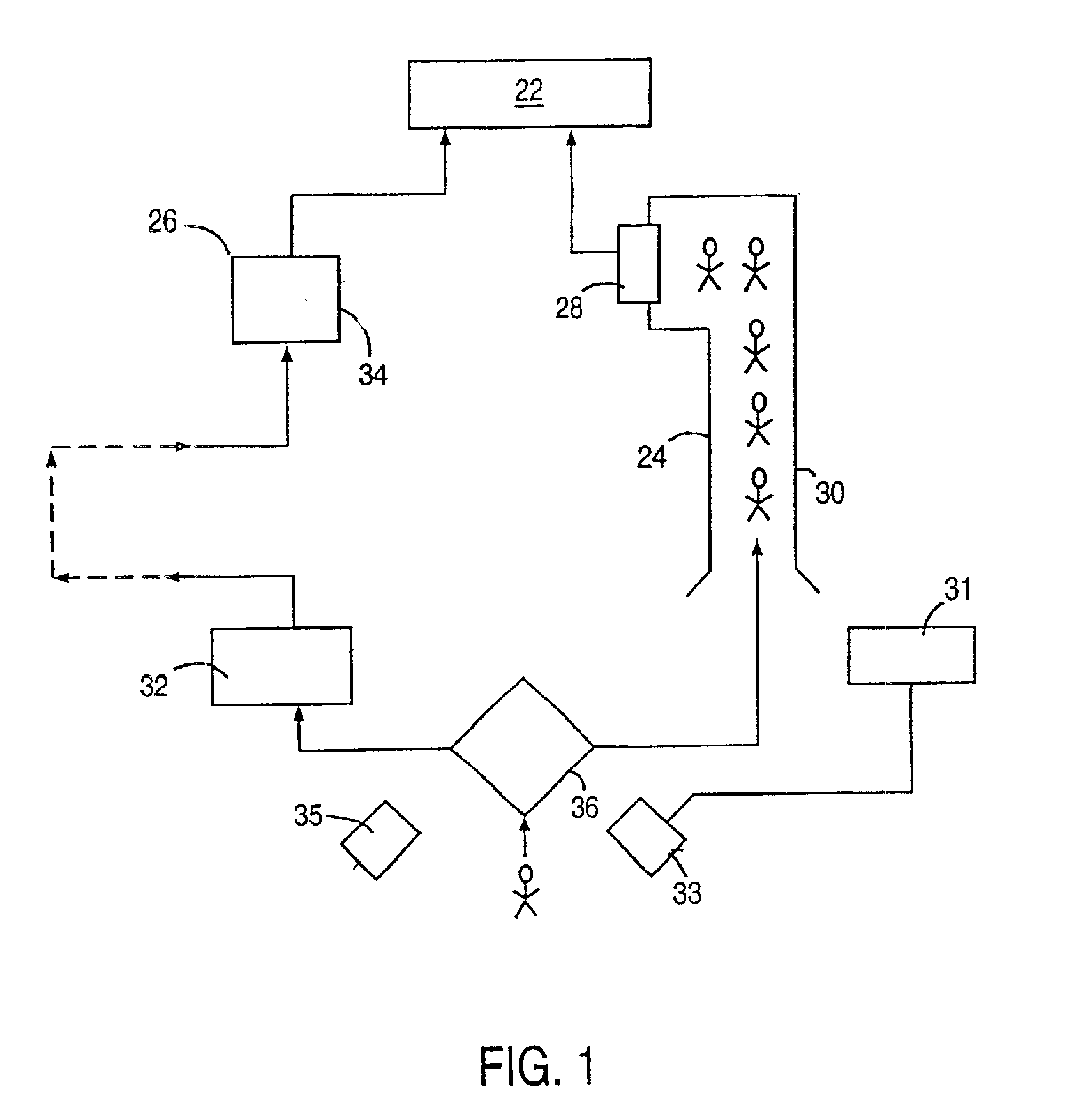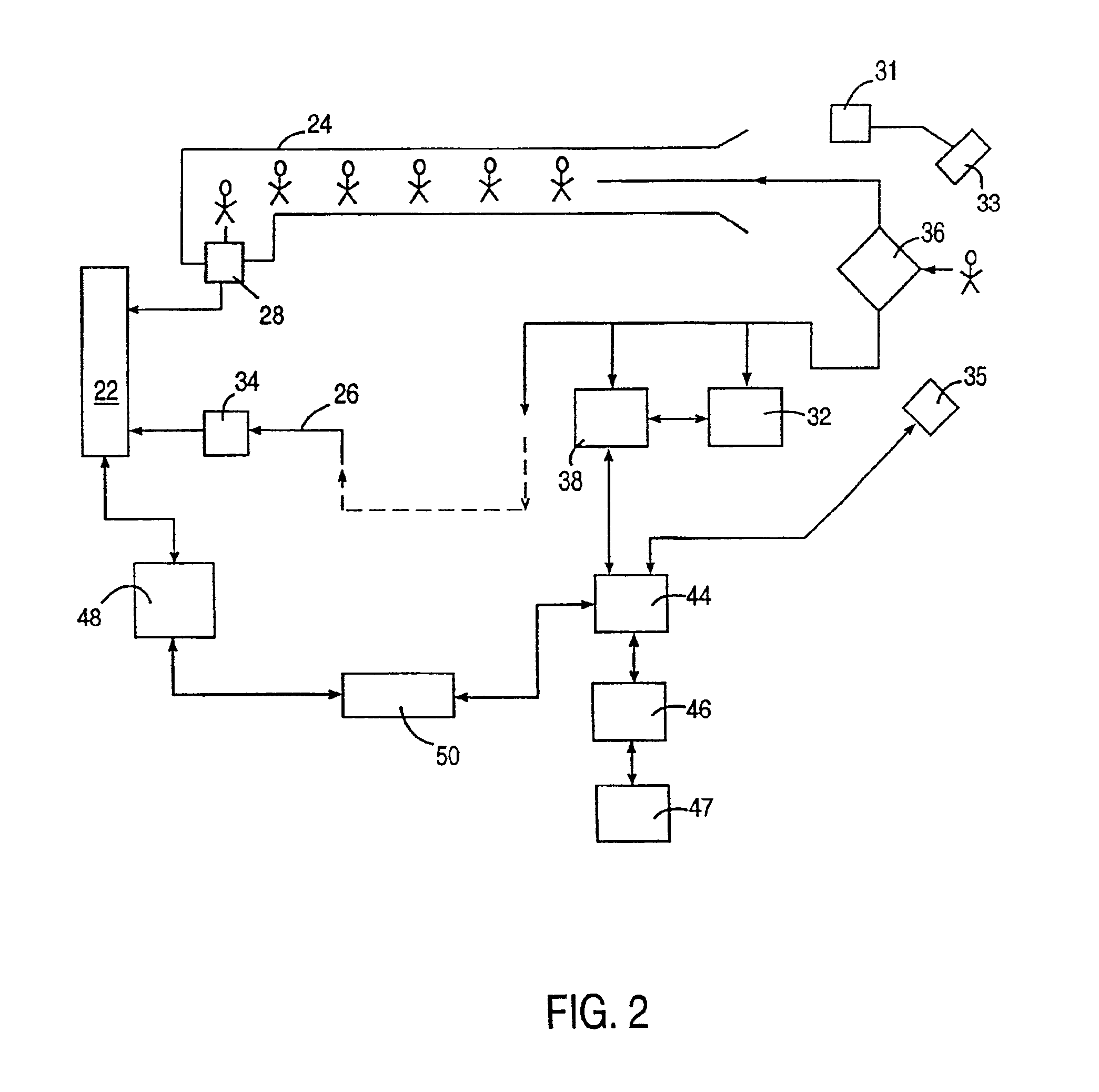Method and apparatus for managing attraction admission
a technology for managing admissions and attractions, applied in the direction of electric controllers, instruments, ignition automatic control, etc., can solve the problems of wasting time in line, affecting the quality of attractions,
- Summary
- Abstract
- Description
- Claims
- Application Information
AI Technical Summary
Benefits of technology
Problems solved by technology
Method used
Image
Examples
example
[0080]If g=2,000, x=60, z=0.8, p=5, then[0081]((2000*0.8)1 60*5=133.33[0082]Rounded down to 133.
Processes
[0083]The system has following processes:
5-Minute Load Process
[0084]Every 5 minutes, a main systems process on a Bridge server will get the Master Controller data (as used herein and in the Figures, “master controller” includes controller 44 as described above and a master controller 244 as described below), call the stored procedure “put_me_data” on the Park server (the Park server may comprise a server such as server 104 described below with reference to FIG. 3), and pass a series of values to the stored procedure. The stored procedure will insert these values into the synonymed “vq_contr_feed_info” table, which points back up to an attraction data server (such as the master server 102 as illustrated in FIG. 4 and referred to in FIGS. 5A-5H as “OPSheet” or local server 48), and update the local Park server table “vq_last_feed_info”.
10-Minute Send Process
[0085]Every 5-10 minutes...
PUM
 Login to View More
Login to View More Abstract
Description
Claims
Application Information
 Login to View More
Login to View More - R&D
- Intellectual Property
- Life Sciences
- Materials
- Tech Scout
- Unparalleled Data Quality
- Higher Quality Content
- 60% Fewer Hallucinations
Browse by: Latest US Patents, China's latest patents, Technical Efficacy Thesaurus, Application Domain, Technology Topic, Popular Technical Reports.
© 2025 PatSnap. All rights reserved.Legal|Privacy policy|Modern Slavery Act Transparency Statement|Sitemap|About US| Contact US: help@patsnap.com



